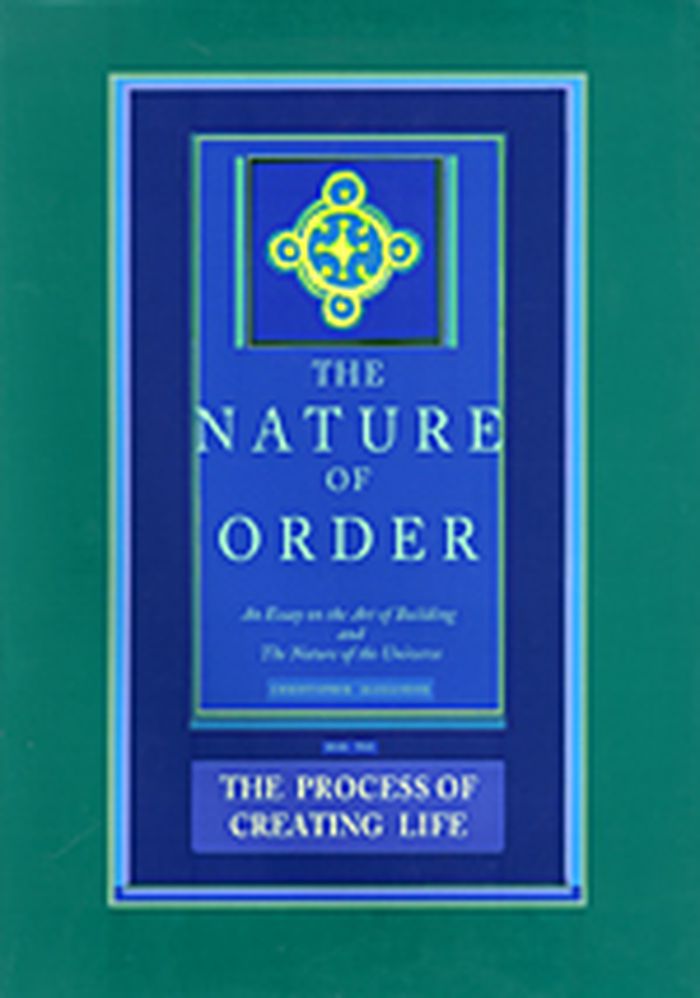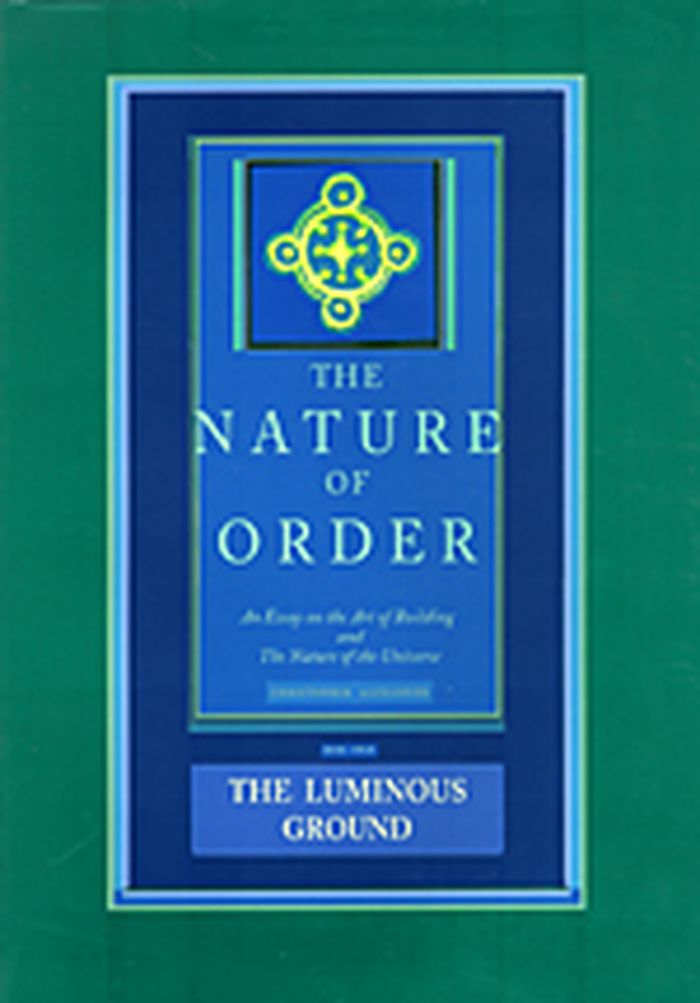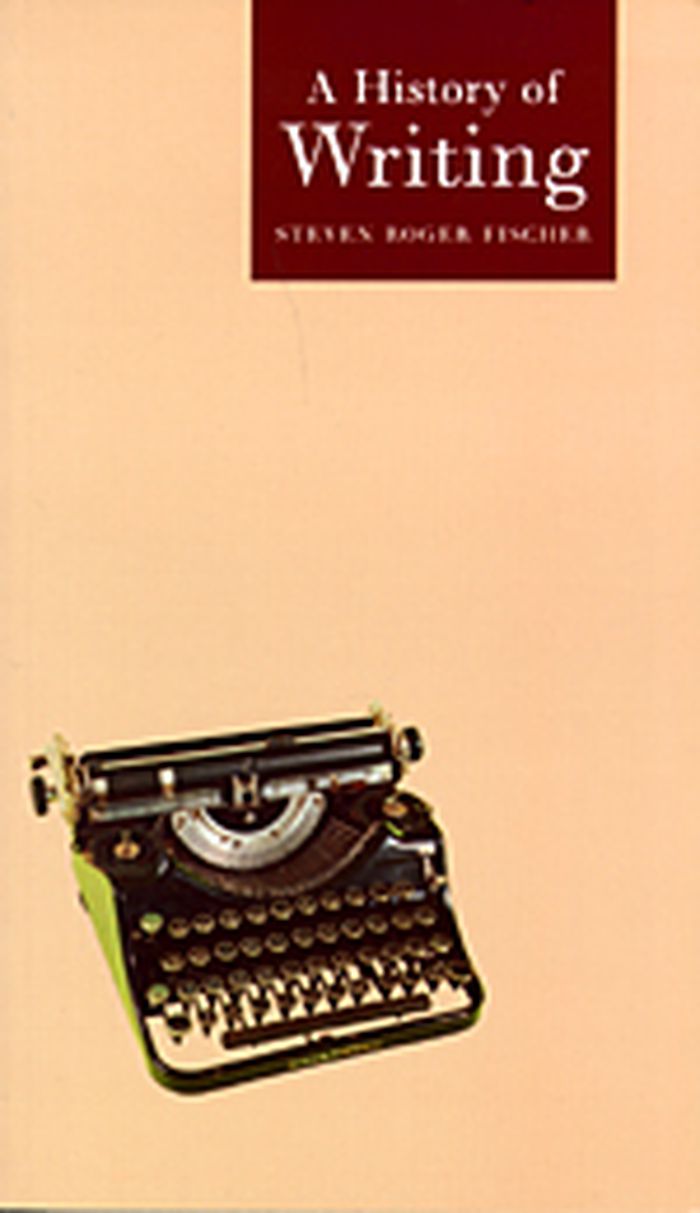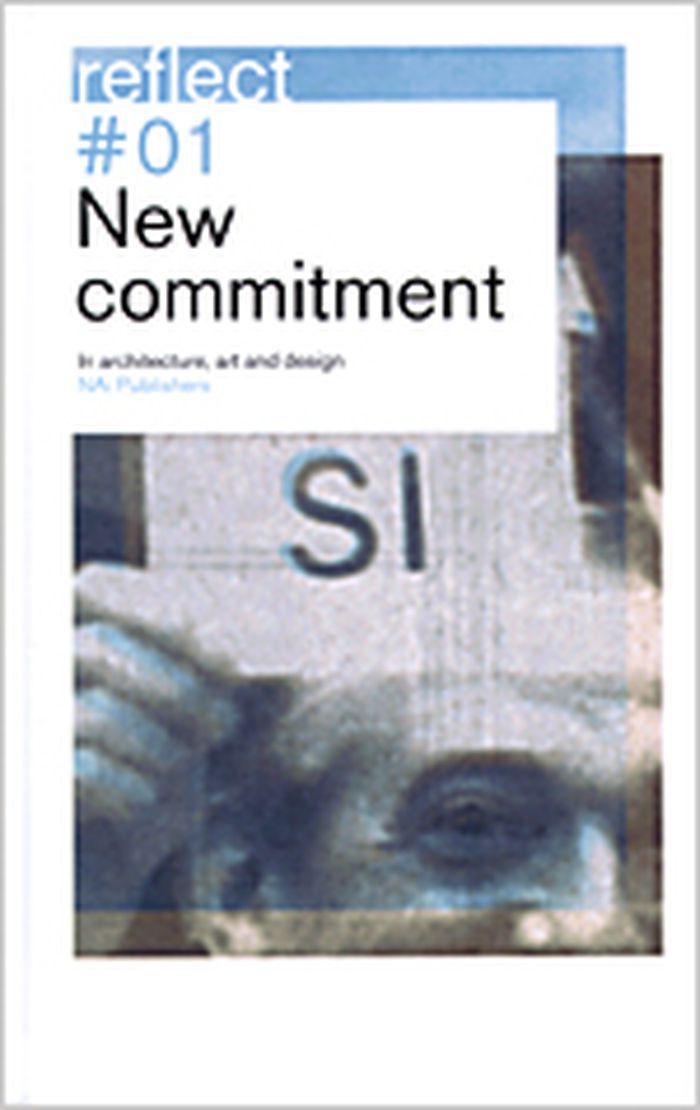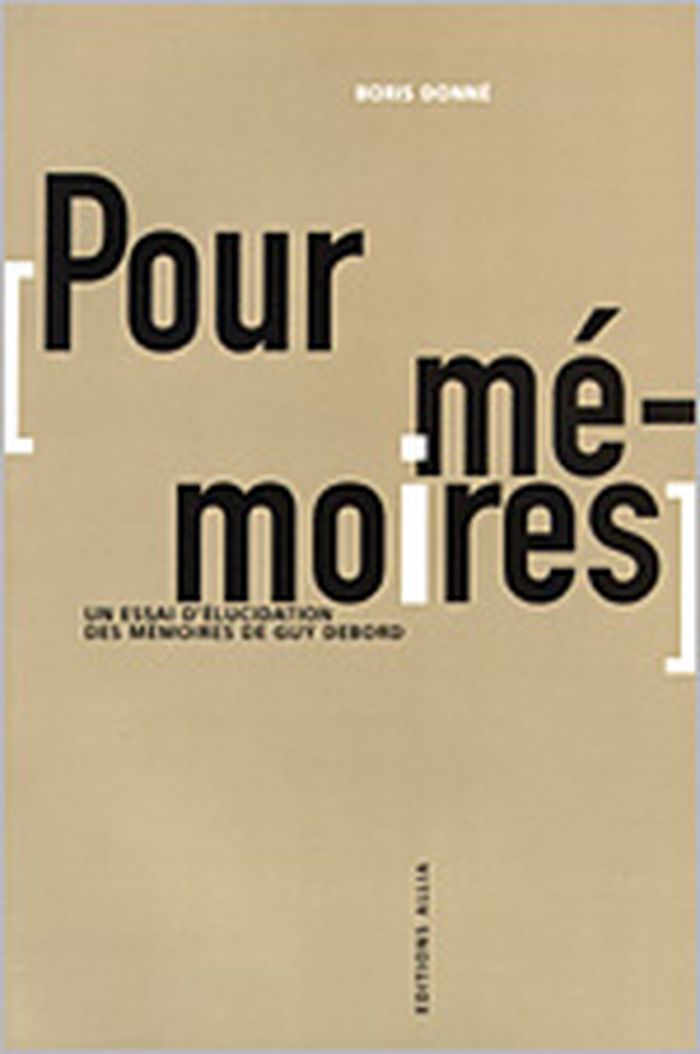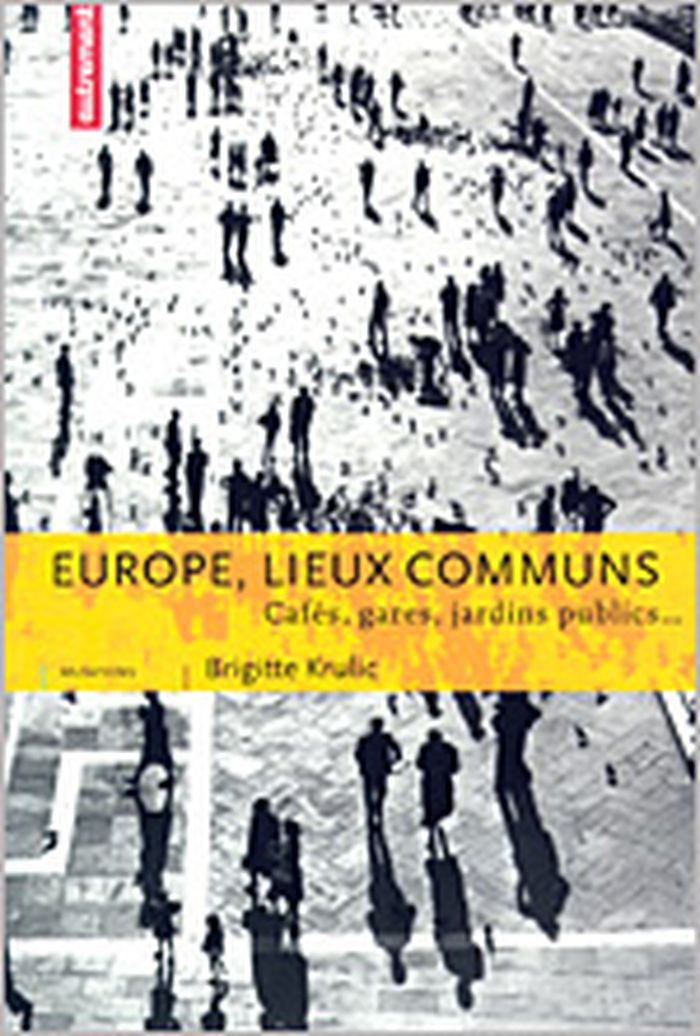books
$38.95
(available in store)
Summary:
The international architecture symposium "space condition" initiated by Roger Riewe at Graz University of Technology accompanied the exhibition "Latent Utopia" curated by Zaha Hadid and Patrick Schumacher. Renowed contemporary architects, designers and architecture critics were invited to elaborate upon the most important issues concerning architectureof today and(...)
Space condition : international architecture symposium
Actions:
Price:
$38.95
(available in store)
Summary:
The international architecture symposium "space condition" initiated by Roger Riewe at Graz University of Technology accompanied the exhibition "Latent Utopia" curated by Zaha Hadid and Patrick Schumacher. Renowed contemporary architects, designers and architecture critics were invited to elaborate upon the most important issues concerning architectureof today and tomorrow. This publication documents the various positions in discussion minutes, pictures and interviews and provides an in-depth insight into current architectural theory discussions.
books
September 2004, Wien, New York
Architectural Theory
books
$15.00
(available to order)
Summary:
Parce qu'il n'y a aucune raison que la seule bonne architecture soit celle d'hier. Parce qu'il n'y a aucune raison que la qualité, le rêve, et l'audace courbent l'échine devant les seuls impératifs de rentabilité. Parce qu'il n'y a pas de raison que notre architecture témoigne moins de notre identité que nos joueuses de tennis, nos chorégraphes ou notre enrobé drainant. (...)
Qui a peur de l'architecture? : livre blanc de l'architecture contemporaine en communauté française de Belgique
Actions:
Price:
$15.00
(available to order)
Summary:
Parce qu'il n'y a aucune raison que la seule bonne architecture soit celle d'hier. Parce qu'il n'y a aucune raison que la qualité, le rêve, et l'audace courbent l'échine devant les seuls impératifs de rentabilité. Parce qu'il n'y a pas de raison que notre architecture témoigne moins de notre identité que nos joueuses de tennis, nos chorégraphes ou notre enrobé drainant. En somme, parce qu'il n'y a aucune raison que nous soyons les seuls au monde à qui l'architecture fait peur. -Juan d'Oultremont
books
April 2004
Architectural Theory
$85.00
(available to order)
Summary:
Alexander examines the kinds of process that are capable of generating living structure. The unfolding of living structure in natural systems is first compared to the unfolding of buildings and town plans in traditional society, and then contrasted with present day processes. The comparison reveals deep and shocking problems which pervade the present day planning and(...)
The nature of order - an essay on the art of building and the nature of the universe. Book two : the process of creating life
Actions:
Price:
$85.00
(available to order)
Summary:
Alexander examines the kinds of process that are capable of generating living structure. The unfolding of living structure in natural systems is first compared to the unfolding of buildings and town plans in traditional society, and then contrasted with present day processes. The comparison reveals deep and shocking problems which pervade the present day planning and construction of buildings. He describes the detailed character of living process needed to generate, design, plan, and build buildings with living structure. The character of living process is contrasted, repeatedly, with the character of present-day professional process, which departs, again and again, from present process, in order to meet the necessities inherent in any truly life-creating process. Pervasive changes needed to create a world in which living process – and hence living structure – are attainable only through a transformation of society. The dynamic methods of Book 2, focusing on process, give an entirely different picture of the facts and concepts presented in Book 1.
Architectural Theory
$85.00
(available to order)
Summary:
Alexander addresses the cosmological implications of the theory he has constructed and presented. The book begins with a critique of current cosmological thinking, and its separation from personal feeling and value. The outline of a theory in which matter itself is more spirit-like, more personal in character, is sketched. The cosmological modifications presented in Book(...)
The nature of order - an essay on the art of building and the nature of the universe. Book four : the luminous ground
Actions:
Price:
$85.00
(available to order)
Summary:
Alexander addresses the cosmological implications of the theory he has constructed and presented. The book begins with a critique of current cosmological thinking, and its separation from personal feeling and value. The outline of a theory in which matter itself is more spirit-like, more personal in character, is sketched. The cosmological modifications presented in Book 4, are needed, to supplement the definition of the personal nature of matter, design, and form, and acts as a substrate for an attempt to implement living process. The book contains a long chapter, nearly one hundred pages long — almost a book in itself — in which Alexander presents his theory of color, as one ingredient of the new cosmological picture which he puts forward. This volume draws attention to new ways of looking at consciousness, and modifies physical theory so that the human person – what we know as self, and what Alexander calls the “I” — enters in as a fundamental and necessary ingredient of all matter.
Architectural Theory
A history of writing
$23.50
(available to order)
Summary:
From the earliest scratches on stone and bone to the languages of computers and the internet, "A History of Writing" offers a fascinating investigation into the origin and development of writing throughout the world. Commencing with the first stages of information storage, Fischer focuses on the emergence of complete writing systems in Mesopotamia in the fourth(...)
A history of writing
Actions:
Price:
$23.50
(available to order)
Summary:
From the earliest scratches on stone and bone to the languages of computers and the internet, "A History of Writing" offers a fascinating investigation into the origin and development of writing throughout the world. Commencing with the first stages of information storage, Fischer focuses on the emergence of complete writing systems in Mesopotamia in the fourth millennium BC. He documents the rise of Phoenician and its effect on the Greek alphabet, generating the many alphabetic scripts of the West. Chinese, Vietnamese, Korean and Japanese writing systems are dealt with in depth, as is writing in pre-Columbian America. Also explored are Western Europe's medieval manuscripts and the history of printing, leading to the innovations in technology and spelling rules of the 19th and 20th centuries.
Architectural Theory
$41.95
(available in store)
Summary:
Architects, artists and designers are on a quest for legitimacy for their work and for socially relevant activities. Professional journals are calling for reflection and reconsideration of how one carries out one's craft. In other words, a debate is clearly underway about a new form of engagement by the design and visual disciplines toward the current problems of(...)
Reflect #01 : new commitment in architecture, art and design
Actions:
Price:
$41.95
(available in store)
Summary:
Architects, artists and designers are on a quest for legitimacy for their work and for socially relevant activities. Professional journals are calling for reflection and reconsideration of how one carries out one's craft. In other words, a debate is clearly underway about a new form of engagement by the design and visual disciplines toward the current problems of society. As a contribution to this debate, this book offers a collection of articles by leading authors who hold this 'new commitment' up to the light.
Architectural Theory
books
$39.95
(available in store)
Summary:
'Modernism and modernity : the Vancouver conference papers' was originally published as the proceedings from a conference held in Vancouver, B.C., in 1983. This publication constitutes a major contribution to the rethinking of the history and debates concerning modernism and modernity.
Architectural Theory
June 2004, Halifax
Modernism and modernity : the Vancouver conference papers
Actions:
Price:
$39.95
(available in store)
Summary:
'Modernism and modernity : the Vancouver conference papers' was originally published as the proceedings from a conference held in Vancouver, B.C., in 1983. This publication constitutes a major contribution to the rethinking of the history and debates concerning modernism and modernity.
books
June 2004, Halifax
Architectural Theory
$34.95
(available to order)
Summary:
Sur le modèle des Documents relatifs à la fondation de l’Internationale situationniste, ce volume rassemble tous les écrits, tracts, documents, monographies publiés entre 1957 et 1960 par les membres de l’Internationale situationniste et qui ne figurent pas dans la revue du même nom. On y trouve plusieurs textes de Debord restés jusqu’à présent inaccessibles comme les(...)
Textes et documents situationnistes 1957-1960
Actions:
Price:
$34.95
(available to order)
Summary:
Sur le modèle des Documents relatifs à la fondation de l’Internationale situationniste, ce volume rassemble tous les écrits, tracts, documents, monographies publiés entre 1957 et 1960 par les membres de l’Internationale situationniste et qui ne figurent pas dans la revue du même nom. On y trouve plusieurs textes de Debord restés jusqu’à présent inaccessibles comme les Remarques sur le concept d’art expérimental ou Préliminaires pour une définition de l’unité de programme révolutionnaire, ainsi que les tracts dont la violence est une des marques de l’IS (Aux producteurs de l’art moderne, Défendez la liberté partout). Mais surtout, ce volume permettra de découvrir quelques aspects ignorés de la production situationniste comme la revue de la section allemande de l’IS Spur, dont le graphisme révolutionnaire annonce tous les fanzines underground et les réalisations artistiques situationnistes, particulièrement importantes au cours de ces trois années, en particulier l’étonnante tapisserie d’Asger Jorn intitulée Le Long Voyage.
Architectural Theory
Pour mémoires
$27.95
(available to order)
Summary:
Réédition en fac-similé du premier livre de Guy Debord, Mémoires, apparemment une œuvre de pure provocation où pas un mot n’est de l’auteur…L’histoire racontée secrètement dans ces Mémoires s’éclaire peu à peu : c’est celle des années décisives où Debord, âgé de 22 ans, oriente son énergie de révolte et son insatisfaction existentielle vers une critique radicale de la(...)
Pour mémoires
Actions:
Price:
$27.95
(available to order)
Summary:
Réédition en fac-similé du premier livre de Guy Debord, Mémoires, apparemment une œuvre de pure provocation où pas un mot n’est de l’auteur…L’histoire racontée secrètement dans ces Mémoires s’éclaire peu à peu : c’est celle des années décisives où Debord, âgé de 22 ans, oriente son énergie de révolte et son insatisfaction existentielle vers une critique radicale de la société dont l’insurrection situationniste ne sera que le développement. Cet essai révèle enfin la pleine charge de sens, de provocation et d’émotion de ce qui est rien moins que le livre des origines profondes et intimes de l’aventure situationniste.
Architectural Theory
$39.95
(available to order)
Summary:
L'Europe est une entité culturelle façonnée par les civilisations grecque et romaine, le christianisme, les Lumières... De la Suède à l'Espagne, de la France à la Russie, sont explorés des lieux emblématiques qui révèlent des lignes de clivage et des points communs. Ces lieux sont évoqués à travers leur histoire politique, religieuse, sociale ; chacun de ces lieux a sa(...)
Europe, lieux communs : cafés, gares, jardins publics...
Actions:
Price:
$39.95
(available to order)
Summary:
L'Europe est une entité culturelle façonnée par les civilisations grecque et romaine, le christianisme, les Lumières... De la Suède à l'Espagne, de la France à la Russie, sont explorés des lieux emblématiques qui révèlent des lignes de clivage et des points communs. Ces lieux sont évoqués à travers leur histoire politique, religieuse, sociale ; chacun de ces lieux a sa charge symbolique, nourrit un imaginaire littéraire, cinématographique, pictural... Chacun de ces lieux dit quelque chose de l'Europe d'aujourd'hui.
Architectural Theory
